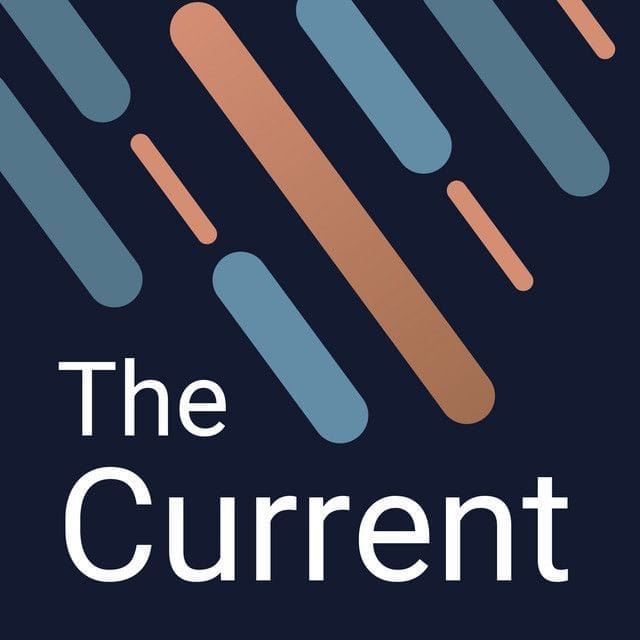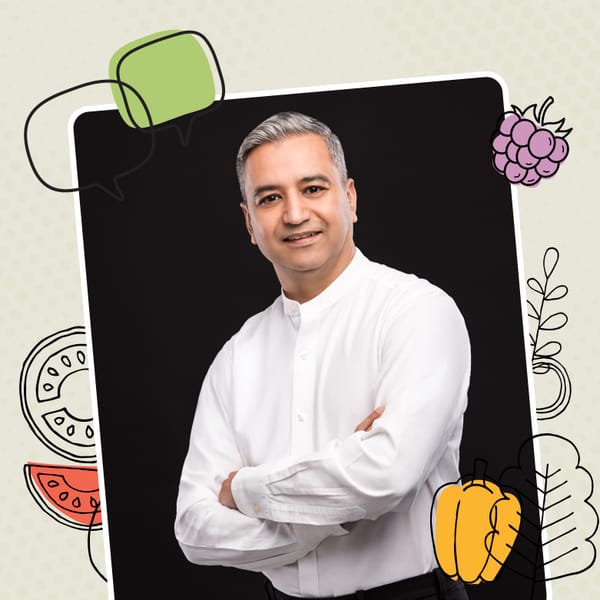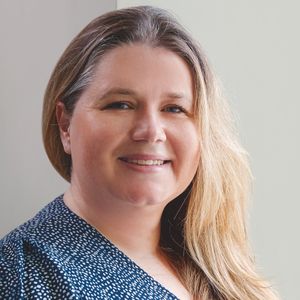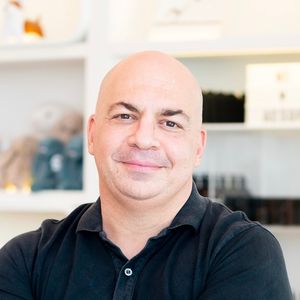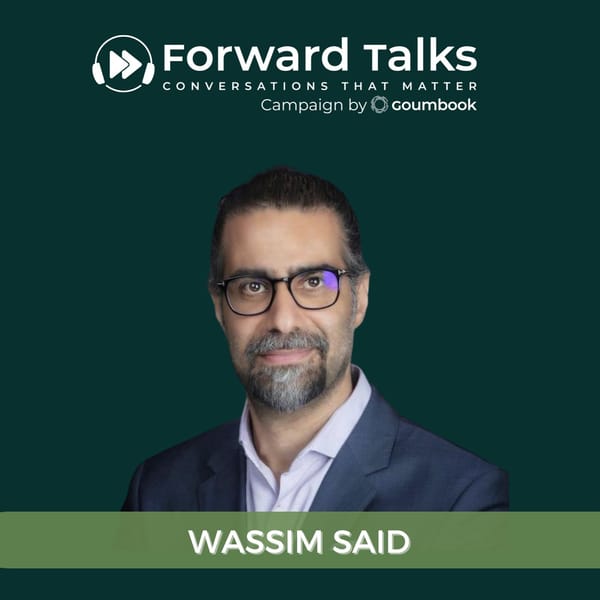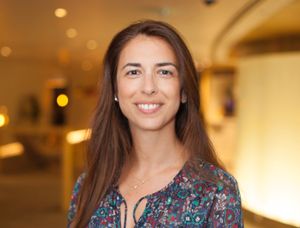In this episode of The Current, host Abdulrahman Bafaraj, Senior Project Manager at EWEC, speaks with Bruce Smith, Strategy and Planning Executive Director, and Mark Hedges, Asset Management Executive Director, about EWEC’s milestone achievements in 2023 and the outlook for 2024 and beyond, as EWEC continues to lead the UAE’s energy transition.
Transcript
Abdulrahman Omar Bafaraj
[00:06 - 00:45] Hello and welcome to The Current, a podcast brought to you by EWEC, the Emirates Water and Electricity Company. I am Abdulrahman Omar Bafaraj, Senior Project Manager at EWEC, and I am delighted to welcome you all to today's exciting podcast episode. EWEC is leading the planning, purchasing, supply and dispatch of water and power across the UAE, with the mission of increasing the proportion of clean energy in the UAE while reducing carbon emissions. So, rounding off a significant year for EWEC, today's episode will discuss some of our biggest achievements from 2023.
[00:47 - 01:01] Joining me to help discuss all this and more are returning guest speakers, Mark Hedges, Asset Management Executive Director, and Bruce Smith, Strategy and Planning Executive Director. Thank you for joining us today, gentlemen.
Bruce Smith
[01:02 - 01:03] It's good to be here. Thank you.
Abdulrahman Omar Bafaraj
[01:03 - 01:15] I know you have both been in this podcast before. But perhaps you could quickly tell our new listeners about your roles and responsibilities at EWEC. Mark, if we can start with you.
Mark Hedges
[01:15 - 01:25] Sure. Actually, I think we should start with Bruce, because the planning and strategy department is kind of the starting point for how we approach things in EWEC.
Bruce Smith
[01:25 - 02:03] Thank you, Mark. Okay, so the strategy and planning team is responsible in the first instance for determining and setting the strategy that the business follows. Then the planning. And the planning that follows on from that is how do we actually implement that strategy. So, we start off with the demand forecasting process. The demand forecast, led by George, George Vantiotis, develops the foundations upon which we plan the capacity, both water and power, that's required in order to enable us to achieve our mandate of security supply, lease cost, and, of course, hitting the government's clean energy targets, 60% clean by 2035.
[02:03 - 02:11] And that, in a nutshell, is really what the plan is. So, what the planning team is all about is about how do we actually do this, and what we need to build in order to hit those targets.
Mark Hedges
[02:12 - 02:50] So, once we see those plans, so we don't have Andy Biffin here from our development team, but those plans get turned into real projects. And when we say real projects, we mean roughly a billion dollars per project that turns those capacity requirements for power and water into projects that eventually get handed over to asset management, which is my team's responsibility. And we take those construction projects and oversee them through the whole construction phase, and then through the lifetime of those projects. So, actually, the delivery of that power and water to the end users in the UAE.
Abdulrahman Omar Bafaraj
[02:50 - 03:24] Thank you both. Given that we have a lot to unpack in today's episode, let's get right into it. 2023 was a busy year for EWEC, with some standout moments. As with previous years, our goal has been to achieve the best possible. Our goal has been to support the UAE in achieving its sustainability and climate ambitions. Mark and Bruce, could you summarize 2023 for us? What were our biggest success stories from your point of view, and what were some of the most important lessons we learned?
Mark Hedges
[03:24 - 03:54] So, maybe, actually, it probably starts a little bit earlier than that. If we go back to 2020, our system was 98% gas. So, 98%. So, 98% carbon-generated fuel. And during the course of the next few years, sustainability was added to EWEC's agenda. And the strategy and planning team started to look at what was required to be built out to achieve those sustainability goals, as well as reducing the costs for the end consumer.
[03:54 - 04:29] And what that's turned into is a new construction pipeline that historically was a new power station built every one to two years. So, we've had a lot of new construction projects in the last couple of years to meet the peak summer demand for electricity, and the water came along with that, i.e., we had co-gen plants that produced power and also used gas to effectively boil water to provide the water for the country's needs. Now, what that had turned into by 2022 was that we had four construction projects running in parallel.
[04:29 - 05:05] Now, in 2023, we are up to six construction projects running in parallel. And by 2026, we'll have over 12 construction projects running in parallel. So, that ramp-up is immense, and it's starting now in 2023. And to give you an idea of what that entails, we're essentially, we are building out a lot of solar PV at a rate of about one to one-half gigawatts per year for the next 10 years, which is a huge, huge ramp-up in solar PV. We're replacing all of that thermal capacity that was being used.
[05:05 - 05:43] We're replacing all of that thermal capacity that was being used to boil water with reverse osmosis, so essentially using pumps and membranes to produce the water, which is not only massively lower carbon, because it's being fed by our new low-carbon electricity from nuclear and from solar PV, but it's also massively reducing the cost as well. So, we've got, in addition to that, we've got the replacement of some of the gas fleet with newer, more efficient gas to keep us, our system secure. Particularly during the overnights when there's limited, sorry, no solar and a limit on how much nuclear we can get onto the system.
[05:43 - 06:21] And then, in addition to that, we have to keep this whole system secure. So, we're looking at other investments such as batteries to balance the system during this period. So, if you think about all of that together, that's why we are getting this huge ramp-up in the number of projects that we are building. Because we're not just building. We're not just building gas plant anymore. We're building solar, nuclear, reverse osmosis, batteries, and some gas to keep the system secure. And so, we've got sort of five times the number of assets going into the ground that actually need to be constructed and then operated and managed.
[06:21 - 06:40] So, it's just really 2023 is the start of that ramp-up in construction that is going to be really significant. It's like an industrial revolution in the power sector going on. And right now, and just starting at that in 2023, and it's going to continue for about the next 10 years.
Bruce Smith
[06:40 - 07:17] I'm going to just jump in a little bit and add to Mark's comment about the importance of decoupling water production here as well. I mean, I think RO is a bit of the unsung hero when it comes to decarbonizing the power and water system here in Abu Dhabi. Because if we stuck with our existing thermal cogeneration fleet, we wouldn't be able to... ...efficiently add more solar and more nuclear into the system. And the problem is, if you don't decouple, it means that you have to carry on burning gas in order to produce water.
[07:17 - 07:57] And Mark alluded to it, but just put some numbers on the table. We're looking at over 25 kilowatt hours per cubic meter of energy to produce a cubic meter of water from thermal cogeneration compared with around three at Tawila. So, 8.5. Times less, basically. Three kilowatt hours per cubic meter at Tawila was a world record when it was announced. And the carbon intensity of a cubic meter of water is similarly falling from a peak of around 15 kilograms per cubic meter to about... Well, it'll be less than one kilogram per cubic meter by the time we get to 2035.
[07:57 - 08:16] Less than two by the time we get to 2030. And in 2030, we will be producing around 90% of our water from RO. And that's absolutely essential to enable us to add this PV that Mark was speaking about and any more nuclear that might get added to the system in future.
Mark Hedges
[08:16 - 08:42] Just to put that in perspective for our listeners, you mentioned that we were going to get to 90% RO water by 2030. Let's just think about that. Remember, no rivers in the UAE. All of our water comes from desalination. And we only... A couple of years ago we were basically 100% of that water was produced through boiling water from gas, effectively.
[08:43 - 09:21] And right now, with the projects that we've already delivered, part of that during the course of 2023, we're over 25% of our water can be produced from reverse osmosis, so from pumps and membranes. And what we're saying is that by 2030, so within the next seven years, we will have replaced the entire infrastructure for water production with the low-carbon, lower-energy, lower-cost reverse osmosis processes. And that is not a small undertaking. That's replacing the entire country's infrastructure for generating water in less than 10 years.
Bruce Smith
[09:22 - 10:00] On the power side, the change has been significant, but perhaps not quite as dramatic as the decline on water. Do you think back to 2019, 2020, when we had a fully gas-based system and we were running with a carbon intensity of around 330 grams per kilowatt hour? We're currently down to 220 grams per kilowatt hour. That's following the introduction of the third nuclear reactor and two solar plants. And we expect that to fall to in the region of 150 once we achieve 60% clean energy in 2035.
[10:00 - 10:10] So there's a very progressive, steady decline that will be more than a 50% reduction from our 330 grams level back in 2019.
Mark Hedges
[10:12 - 10:45] It's worth putting that into perspective on a sort of a global scale a little bit as well. And a lot of countries, their main source of fuel for generation is dependent on what resources there are in that country, historically. So if you happen to be in, I don't know, the Scandinavian region, they have a lot of mountains, a lot of water, they have a lot of hydro. And that was the core input fuel, if you like, driving electricity production in those regions. So they historically have got a very, very low carbon intensity for their water.
[10:45 - 11:13] In this region, natural gas was plentiful because of the oil and gas production that is very prevalent in this region and is used around the world to drive everyone's planes and automobiles and everything else. And so a lot of our generation was gas-based, which made sense. Now, we're trying to transition away from that. But we're already starting from quite a low base because a lot of parts of the world, they dug up coal and burnt coal for their generation. And the carbon intensity of coal was roughly double that of gas. So maybe 600.
Other speaker
[11:13 - 11:14] More, 800.
Bruce Smith
[11:15 - 11:33] I mean, you look at India, it's got 200 gigawatts of coal and they've got an average system intensity of well over 600 at the moment. So whilst they're trying to decarbonize quite rapidly by adding renewables, they've still got that 200 gigawatts of coal capacity to provide that cheap baseload capacity. So the UAE, in terms of historically...
Mark Hedges
[11:33 - 12:07] ...where compared to countries where coal generation was prevalent for its electricity production, it was already pretty clean with 100% gas-based generation back in 2019. And very, very rapidly in a very short number of years, it's only over a period of about four years, we've gone from 100% gas at around the 300 level to now going to be 60% low carbon... ...by 2035 at 150 grams per kilowatt hour.
Bruce Smith
[12:07 - 12:10] And 40% today. Yeah, 40% today.
Other speaker
[12:10 - 12:12] So that is a huge transition.
Mark Hedges
[12:12 - 12:23] And actually, I think that rate of change over the last few years is unsurpassed anywhere else in the world. Maybe we had a bit of a head start because we started the nuclear program. When did we start that, Bruce?
Bruce Smith
[12:24 - 12:24] 2008.
Mark Hedges
[12:25 - 12:57] But actually, when it started construction was around 2012, I think, something around there. When the nuclear started construction. So we're seeing the fruits of our labor in these last few years as the reactors have come online, one a year. But really, the transition we're going through right now in a very short space of time is actually decarbonizing this system very, very rapidly at a rate that really is unprecedented anywhere else in the world that I've seen in the last decade or so.
Abdulrahman Omar Bafaraj
[13:01 - 13:27] Bruce, you mentioned in 2016, we started the first RO in the Gulf. And from that point, we have M2, we have Taweelah RO, we have S4. Now we have also Abu Dhabi Islands RO, all located in the Gulf region. And we also forecasted that our water production will be emissions-free by 2035. Does this mean that we are the first one in the region?
Bruce Smith
[13:27 - 13:47] Just pick a little, a bit of an issue with you when you say emissions-free. We're close to emissions-free. And we will have reached that. We will reduce from a peak for around 15 kilograms per cubic meter to about 0.8 kilograms per cubic meter. So very low carbon, yeah, I'm very happy with. Zero carbon, not quite there yet.
Mark Hedges
[13:47 - 14:26] And let's face it, wherever you are in the world, it takes energy to get water treated and get it to an end consumer. In this part of the world, that energy is significantly more because you have to carry out a desalination process before you can then treat the water and get it ready for public consumption. But the water then still needs to be pumped to the end user. So that's one advantage we do have here. Those projects you mentioned are very, very large reverse osmosis projects along the coast of the UAE.
[14:26 - 15:06] All of them are inside of the Gulf area. And what they are... What we're doing is more and more we are siting these projects near to where the actual demand is because reverse osmosis projects are a lot less intrusive on the visual environment than a very large power station. And so we're able to put those plants very close to demand, which reduces the pumping costs for pumping that water to where it's actually needed to be used. So that's an advantage with the reverse osmosis versus if you think about other countries where water is collected in big reservoirs
[15:06 - 15:43] and then it has to then be pumped out to consumers from wherever it's collected. There's pros and cons to producing energy and producing water in every region you are in the world. Obviously, the pros that we have here are around the fact that we can locate it near to the consumer, but also are, and this is common with every grid system, the carbon intensity of the energy. And that water is going to be reliant on the overall carbon intensity of the electricity input into producing it. And obviously in the UAE with our nuclear program and our PV program
[15:43 - 15:59] and also latterly wind we're looking at as well. And all of that goes to drive down the carbon intensity of the overall grid. And that is decarbonizing the whole economy and every process that uses electricity as its input energy source.
Abdulrahman Omar Bafaraj
[15:59 - 16:23] Well said. A great year. Indeed for EWEC in both solar and water projects. You have mentioned the wind program. Yes, this is also the year that EWEC began procuring power from the UAE first wind energy program. What are the benefits of adding the wind to our network?
Bruce Smith
[16:23 - 17:01] That's a really interesting question because on the face of it, wind at nearly three times the cost per unit of energy produced, compared with solar. So why are we adding it to the system? It's more expensive. But wind blows at night. It doesn't just blow during when the sun's shining. So it adds an advantage in terms of diversifying the sources of clean energy that can be produced, not just during daylight hours. So it means that in the longer term, we won't need to put so much in the way of battery storage or energy storage into the system. It basically replaces storage rather than solar.
[17:01 - 17:15] Solar remains the cheapest energy by far, and we'll put as much of that as we possibly can. But what we do need to do is try and reduce the cost of producing energy back to the grid when the sun's not available. And that's where wind comes in.
Abdulrahman Omar Bafaraj
[17:15 - 17:37] Bruce, you have mentioned that we need wind at night where there is no solar. Another technology that we are investigating is the BESS or the battery energy storage system, where EWEC has recently issued the RFP for a 400 megawatt hour. Can you tell us more about this and why we are looking into battery?
Bruce Smith
[17:37 - 18:11] Yeah, that's another good question. I mean, it's important to realize that that 400 megawatts is only for one hour. And when we say one hour, what we're going to be using those batteries for is for reserves. That means we're using the batteries to stabilize the frequency of the power within our system. And as we get small variations in the frequency, the battery will automatically stabilize. So if we step in to smooth that out, it's not there or this project is not there to provide arbitrage. In other words, it's not there to be filled up with energy during the day and then discharged at night.
[18:11 - 18:50] That will be the longer duration batteries that we are expecting to install in the early 2030s. But of course, that's dependent on the price. We've seen quite a dramatic fall in the price in the second half of 2023, where we saw declines in the region of 30%. A lot of new battery capacity has come online in China. And we are exploring or hope to be exploring as an output from the current tendering process for the 400 megawatts times one hour, what the price would look like for four hours. That will give us better insight into how quickly we can go to market
[18:50 - 19:01] and start to replace nighttime generation using gas with energy produced using solar, but return to the grid from a battery. So that's the best system, a battery energy storage system.
Mark Hedges
[19:01 - 19:40] And let me just turn that into something very practical for our listeners. So remember where we started this conversation. We said that only back in 2020, the system was 98% gas generation. So what that means is we had gas turbines around the country that were providing all of the electricity, gas turbines and steam turbines, so combined cycle plants. So they're using the hot flue gases to drive, a boiler that generates steam and then runs a steam turbine as well. But those systems, they're big, they're connected to big rotating masses, i.e. the generators that are keeping the system stable.
[19:40 - 20:18] And they are able to fluctuate to help us to meet fluctuations in demand from the end consumers using electricity. Now, what we are more and more doing now with the decarbonization program, with our sustainability agenda, is replacing that during the day with solar PV, with some wind generation, with a lot of nuclear generation from the UAE nuclear program. And what that naturally means is that you have far less gas turbines running at any given time. And it's the gas turbines that were providing the response to the fluctuations in demand every day.
[20:18 - 20:57] So if we have less gas turbines, we've got less capability to cope with fluctuations in demand. And in order to replace that, inherent responsiveness of the fleet, we're putting in batteries which can operate super quickly. We're talking about response in sub-second response from the batteries to help manage those fluctuations in demand. And that's why we're putting batteries in to manage the fact that we are taking gas turbines off the system as quickly as we can. And in certain periods in the winter, we're getting to the point where we're,
[20:57 - 21:13] we are seeing really high levels of low carbon generation and fewer and fewer and fewer gas turbines actually running to balance the system. So that's what it means in a very practical sense what we're doing every day from the system operations point of view.
Bruce Smith
[21:13 - 21:52] And perhaps the natural extension of that is how do we operate the system for that first hour when there will be no gas being burned? So the zero hour target could happen as soon as 2028, we're currently forecasting that the lowest hour of demand in winter 2028, we could be seeing 98% clean energy production. And that will require us to have developed the systems, the processes and the procedures with the, obviously the people able to run the system and having comfort that they can run the system securely
[21:52 - 22:00] at those very high penetrations of clean energy. And that's what Project GET does. Which is running at the moment is all about enabling.
Mark Hedges
[22:00 - 22:40] And that stands for Grid Energy Transformation, which is what it is all about. And that is, that is the trick, right? A lot of countries around the world have decarbonized to a good extent. And they do that very rapidly with the cheaper renewables that are available nowadays up to a point. And then suddenly they hit a restriction because they struggle to get above a certain sort of penetration of renewables into the market while maintaining security supply. And remember, electricity is absolutely core to industry, to the economy, to everyone's life day to day.
[22:40 - 23:06] And we expect it and rely on it to be available 24/7, every second of the day, completely balanced all of the time. And there is not really any other commodity that has the same sort of reliability, apart from the internet, which is powered by electricity anyway, right? So no other commodity that you buy is provided to you at that level of reliability.
Abdulrahman Omar Bafaraj
[23:06 - 23:41] This feels like a good segue into our next segment, focusing on our 2024 outlook and beyond. As you mentioned, Bruce, that we are targeting 100% or full demand from renewables by 2028. In February 2023, we achieved 80% of the total demand to emit through solar and nuclear. So how are we forecasting the future to enable us to reach that goal in 2028?
Bruce Smith
[23:41 - 24:20] Yeah, I mean, George leads the demand forecasting team and we spend a lot of time building the models to help us project what the forecast could be in the future. And one of the challenges we face as forecasters is that we're invariably wrong. What we're trying to do is to provide an envelope of uncertainty, if you like, within which the real answer is likely to lie. Even with the base case at the moment, we're looking at close to 5% per year underlying growth. And as I said, that could go up significantly. And on top of that, the grid has been expected to electrify energy consumption
[24:20 - 24:39] that today is served by fossil fuels directly, petrochemicals. Transport, cement production, for example, all of those have significant demands that could in the longer term be electrified. And that will mean that the grid needs to serve a larger proportion of the underlying electricity value chain, energy value chain.
Mark Hedges
[24:40 - 25:16] And maybe just pick you up on one of the points you said by 2028, zero carbon. It's potentially that we can hit that at some hours of the day. And actually, we're getting close to that in the winter. Right now, which is why you flagged the 80% renewable and low carbon energy that we hit in February this year. So let me just maybe put some color on that for people and put it into perspective. So this summer, our peak demand in Abu Dhabi and the Northern Emirates was about 18 gigawatts.
[25:17 - 25:53] In the winter, the peak is less than 10. So it's significantly higher. It's more energy consumption in the summer than in the winter. And we all know why that is. It's driven by AC demand in the country where we have massively a summer peaking market here with the AC demand. So in the winter, we don't need as much generation. And we have a huge base load now of nuclear, which by Q1, Q2 will be up to 5 gigawatts. So half of our winter peak generation can be provided by nuclear. And by 2028,
[25:53 - 26:01] we would have enough solar to actually be able to run the system in the winter with just nuclear and solar.
Abdulrahman Omar Bafaraj
[26:03 - 26:16] That brings us to the end of our discussion with Mark and Bruce. Thank you, gentlemen, for taking the time to be on our show. We look forward to having you back again soon and wish you the best of luck for the year ahead.
Bruce Smith
[26:16 - 26:17] Thank you very much.
Mark Hedges
[26:17 - 26:18] Thank you. Pleasure.
Abdulrahman Omar Bafaraj
[26:20 - 27:00] Just before we end, I would like to update our listeners on a few EWEC milestones from Q4 2023. At the beginning of the quarter in October 2023, EWEC signed a power purchase agreement with Masdar for power generated from the UAE's first utility-scale wind program located at Sila, Sir Baniyas Island and Delma Island. The wind power farms have a generation capacity up to 99 megawatts of renewable, carbon-free electricity. Also in October, EWEC signed an MOU with the UAE Pro League to decarbonize their electricity consumption
[27:00 - 27:39] through the adoption of Clean Energy Certificates. Issued by the Abu Dhabi Department of Energy, Clean Energy Certificates empower businesses in Abu Dhabi to verify their clean energy consumption claims and reduce their carbon footprint. In November 2023, EWEC integrated the 1.5 gigawatt AC of Dhafra Solar PV project, which will power nearly 200,000 homes and eliminate over 2.4 million tons of carbon emissions annually. Dhafra uses almost 4 million solar panels, which deploy innovative bifacial technology
[27:39 - 28:18] ensuring sunlight is captured on both sides of the panels to maximize yield. November also saw EWEC launch its Q4 2023 auction for clean energy certificates. Across the year, EWEC has seen the largest number of auction participants to date, demonstrating a collective dedication to sustainability within Abu Dhabi and the UAE. In December, we announced the successful financial closing of the Shuweihat 4 reverse osmosis seawater desalination project. The project is our second utility-scale
[28:18 - 28:56] reverse osmosis plant to reach financial close with the UAE. In December, we signed an MOU with Energy Exemplar to jointly explore opportunities to expand our advanced modeling capacity and bring Energy Exemplar's state-of-the-art cloud-based platform modeling to the Middle East for the first time. Before we sign off, I want to extend a huge thank you to all our listeners for joining us. Your support has been invaluable, and we look forward to bringing you more insights and fresh perspectives throughout the year.
[28:57 - 29:14] To keep up with our news and insights, do not forget to subscribe to the podcast through your preferred platform. You have been listening to the current podcast brought to you by EWEC. I am Abdulrahman Omar Bafaraj, and it has been a pleasure. As-salamu alaykum.

